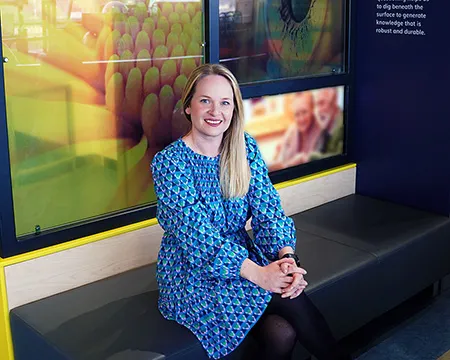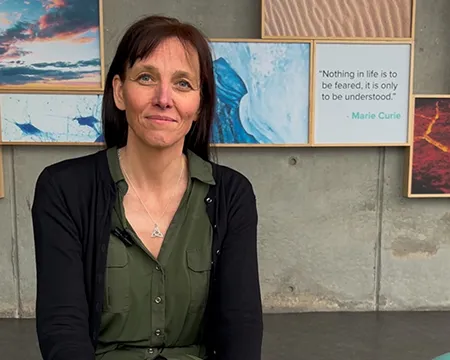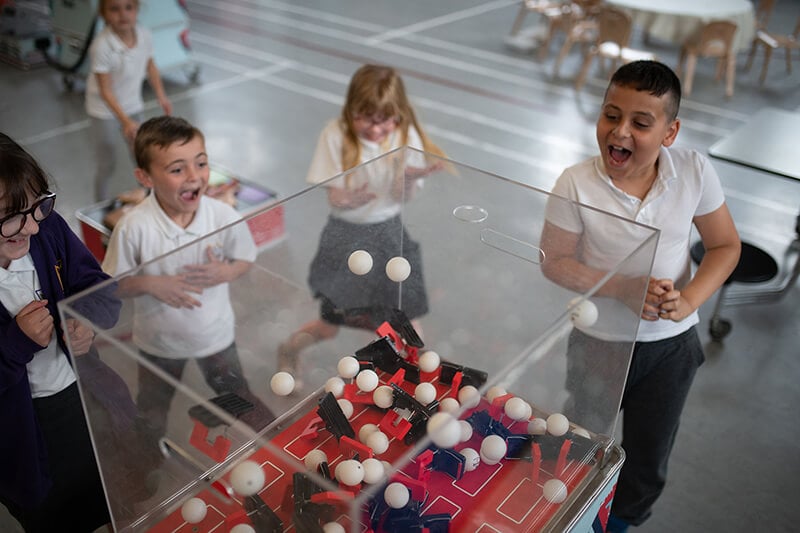Scottish Women Who Have Shaped Engineering
23 June marks International Women in Engineering Day. To celebrate, the team at Glasgow Science Centre have rounded up some inspirational women who've made their mark on the engineering industry throughout the years - and they're all from Scotland!
Dorothy Donaldson Buchanan

Dorothy Donaldson Buchanan was born in Langholm, Dumfriesshire in 1899 and was awarded a degree in Civil Engineering from the University of Edinburgh in 1923. She later went on to become the first female chartered engineer after qualifying for membership to the Institution of Civil Engineers in 1927.
Buchanan began this journey following graduation when she travelled to London to work with Sir Ralph Freeman. She worked in the design and drawing offices for the Sydney Harbour Bridge project.
Buchanan went on to work for contractors S. Pearson & Sons at the Belfast Waterworks Scheme on the Silent Valley Reservoir project in Northern Ireland. This provided her with the necessary on-site experience needed to satisfy the qualification requirements to become a chartered engineer. Buchanan then returned to London where she worked for Dorman Long in, the design office on the George V Bridge project in Newcastle, Lambeth Bridge project in London, and the Dessouk and Khartoum bridges in Sudan. It was during this time that she successfully sat her exams and became the first women in Britain to become a qualified civil engineer.
Anne Gillespie Shaw

Anne Gillespie Shaw was not only an exceptional engineer who played an important part during the second world war, she was also a pioneer of motion study. She was a graduate of the University of Edinburgh before studying in the USA.
When she returned from America she quickly worked her way up the Metropolitan-Vickers Electrical Company in Manchester, and by 1933 she was chief supervisor of company's female workers.
During the second world war, Anne organised motion training to improve the rate at which aeroplanes could be produced. She was a pioneer in the industry and was recognised with countless awards before and after her death.
Victoria Drummond

Victoria Drummond was the first British woman Marine Engineer in the UK. Victoria was born in Megginch Castle, Perthshire in 1894, and was goddaughter to Queen Victoria. However, this didn't stop Victoria Drummond achieving her dream - much to the surprise of her aristocratic family.
During World War 1, Victoria had the opportunity to begin an apprenticeship in Northern Garage, aged 21. She then moved on to Caledon Shipworks in Dundee - where she was the only woman in a company of 3000 men.
Victoria studied at Dundee Institute of Technology as an apprentice. Once qualified, Victoria set sail on a merchant ship for the Blue Funnel Line Vessel, the SS Anchises as tenth engineer. Victoria met much prejudice and found it hard to find work during the depression, which may be the reason why she failed the chief engineers exam 37 times.
Undeterred, Victoria achieved her chief engineer's certificate from Panama. Victoria served on board ship, on the SS Bonita in 1940 and was attacked by a German bomber. Victoria sent all other engineers away and stayed below deck keeping the engines running during the attack, arriving in the USA a heroine.
She was awarded an MBE and the Lloyd's Medal for Bravery at Sea. Victoria continued her career in Dundee and Burntisland as a superintendent of shipbuilding and became a chief engineer. She returned to sea before retiring in 1962, aged 68.
Victoria Drummond was not only the first woman to to serve as a chief engineer in the Merchant Navy, but the first woman to become a member of the Institute of Marine Engineers. She was a courageous and determined woman who was a trailblazer for women in Marine Engineering - and if you're in the area, there's a plaque in her memory outside Abertay University in Dundee.
Margaret, Lady Moir OBE

Born in Edinburgh in 1864, Margaret became heavily involved in the engineering world initially through her husband Ernest's work, but made her own distinct mark on the profession.
As well as training and working as a lathe operator, she organised the Women Relief Munition Workers, who were educated women providing weekend relief for weekday staff, aiding the munition s effort of the First World War.
Frustrated by the return of women to their domestic lives when the war had ended, Margaret and her peers created the Women’s Engineering Society in 1919. By 1930 an engineering course specifically for women was in operation across several polytechnics thanks to the society.
She recognised that beginning a career in engineering alongside the demands of running a household was challenging, leading to her presidency of the Electrical Association for Women, which promoted the potential of electric appliances in easing the labour required for chores.
The Women’s Engineering Society still operates today, acting as a networking space for female scientists and engineers.
Learn more
Want to learn more about International Women in Engineering Day?






